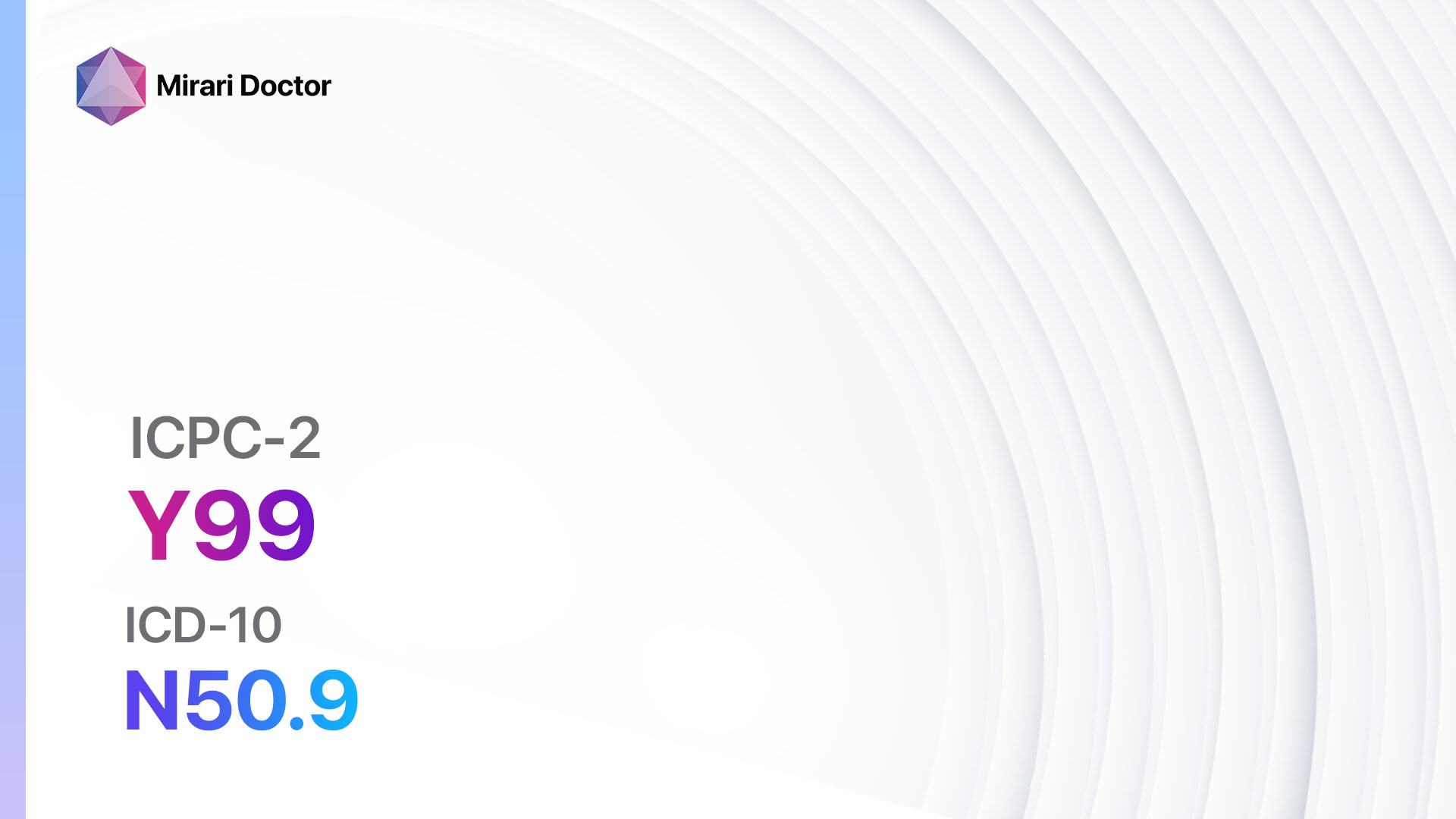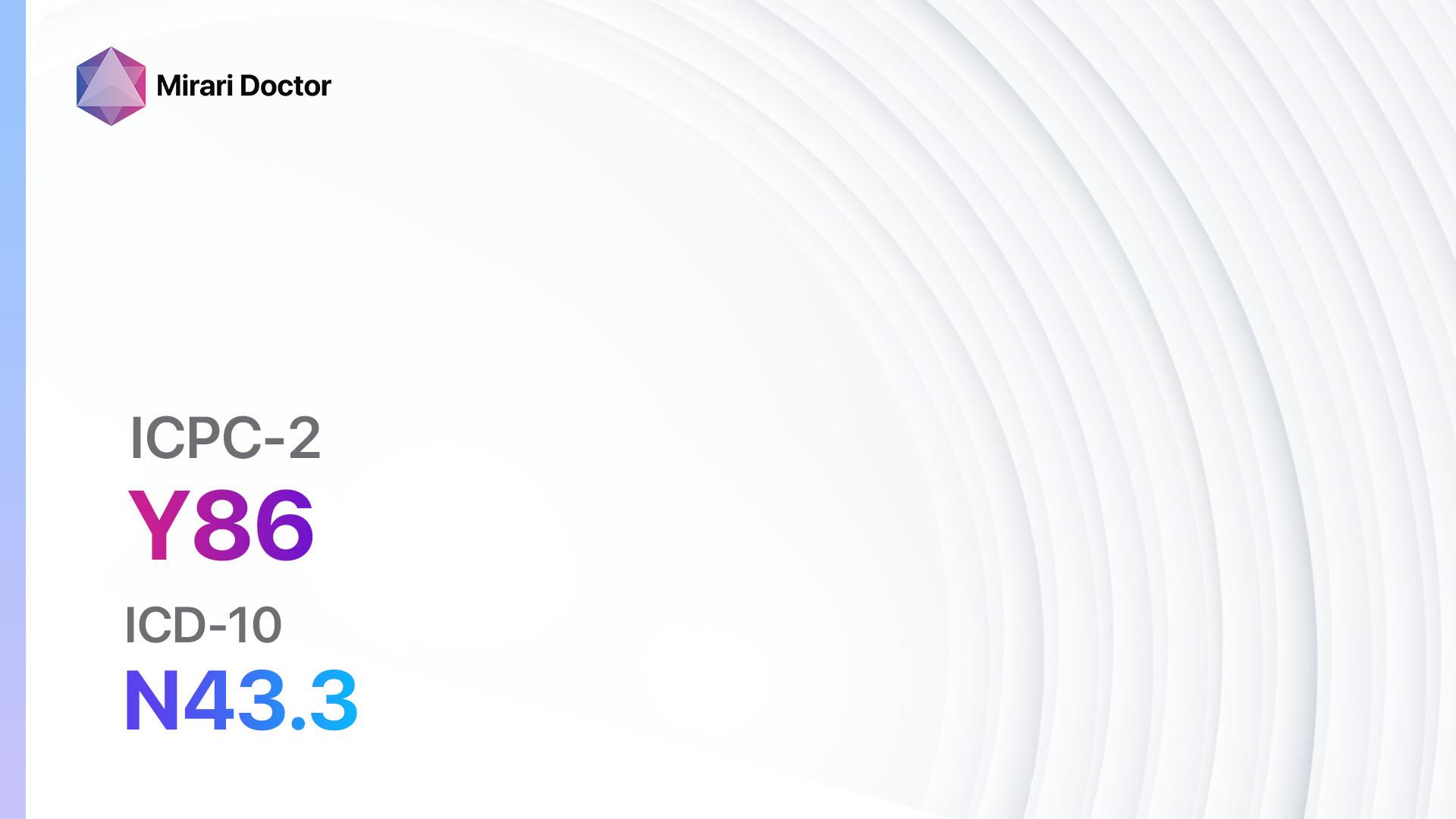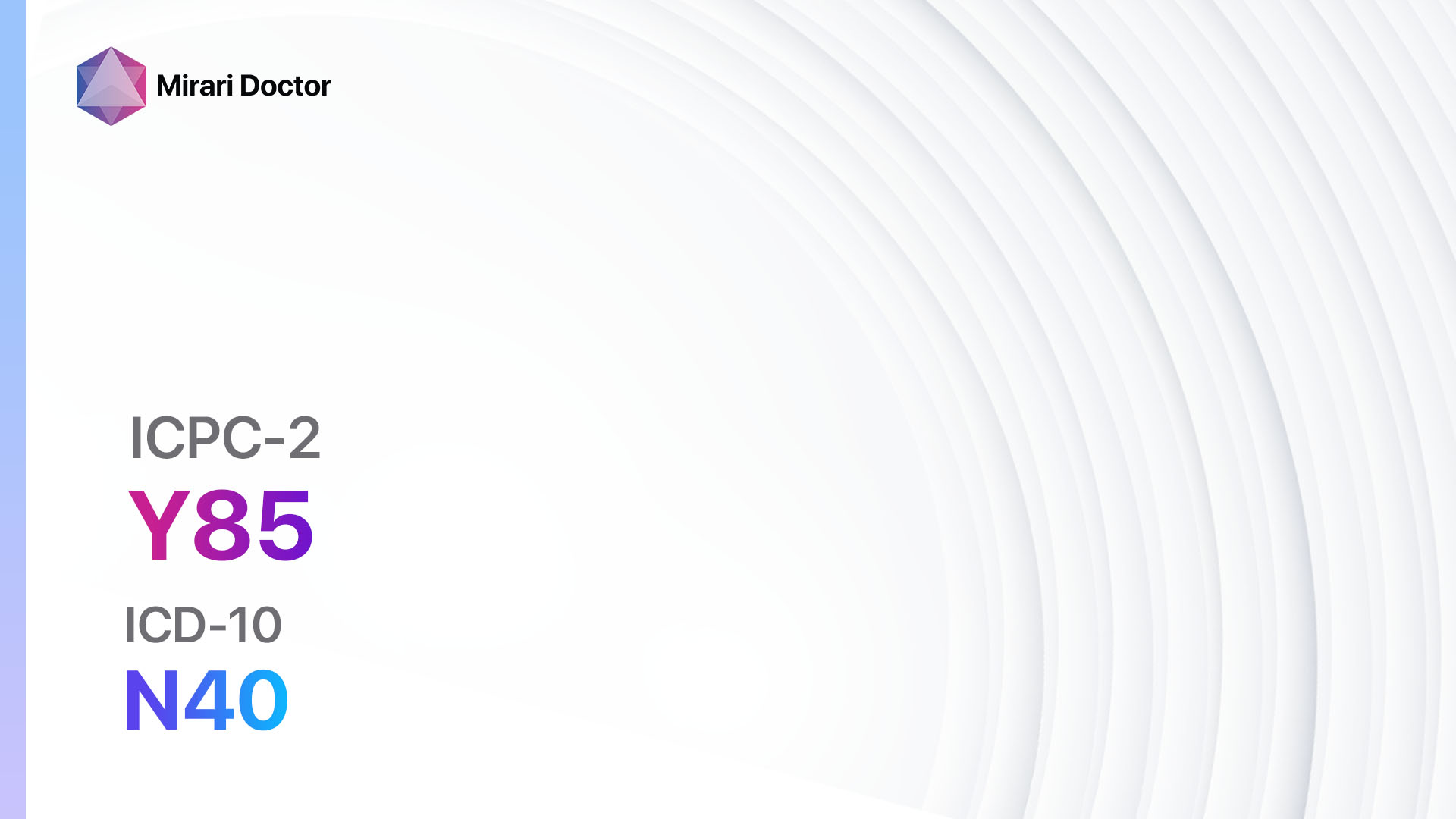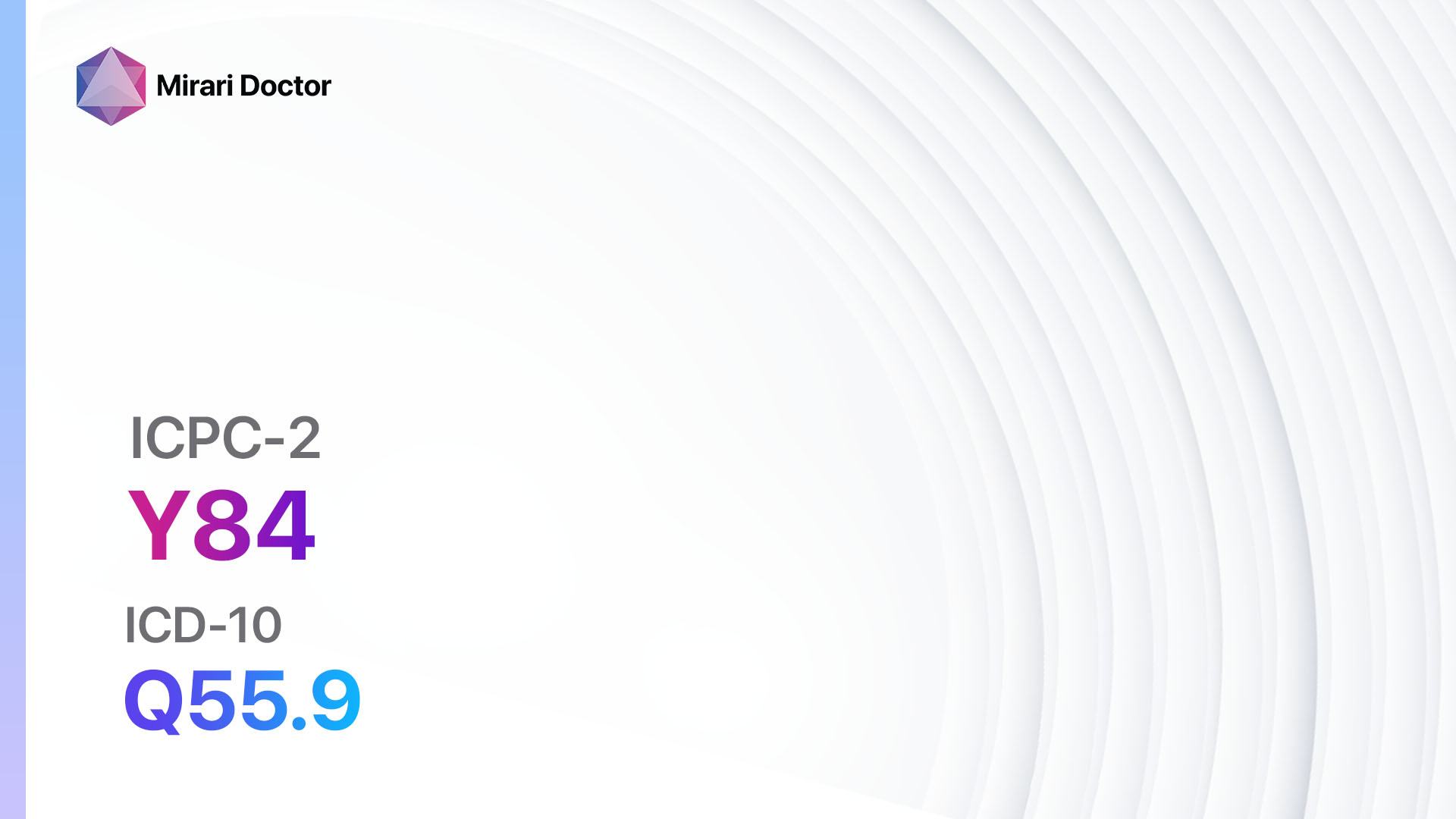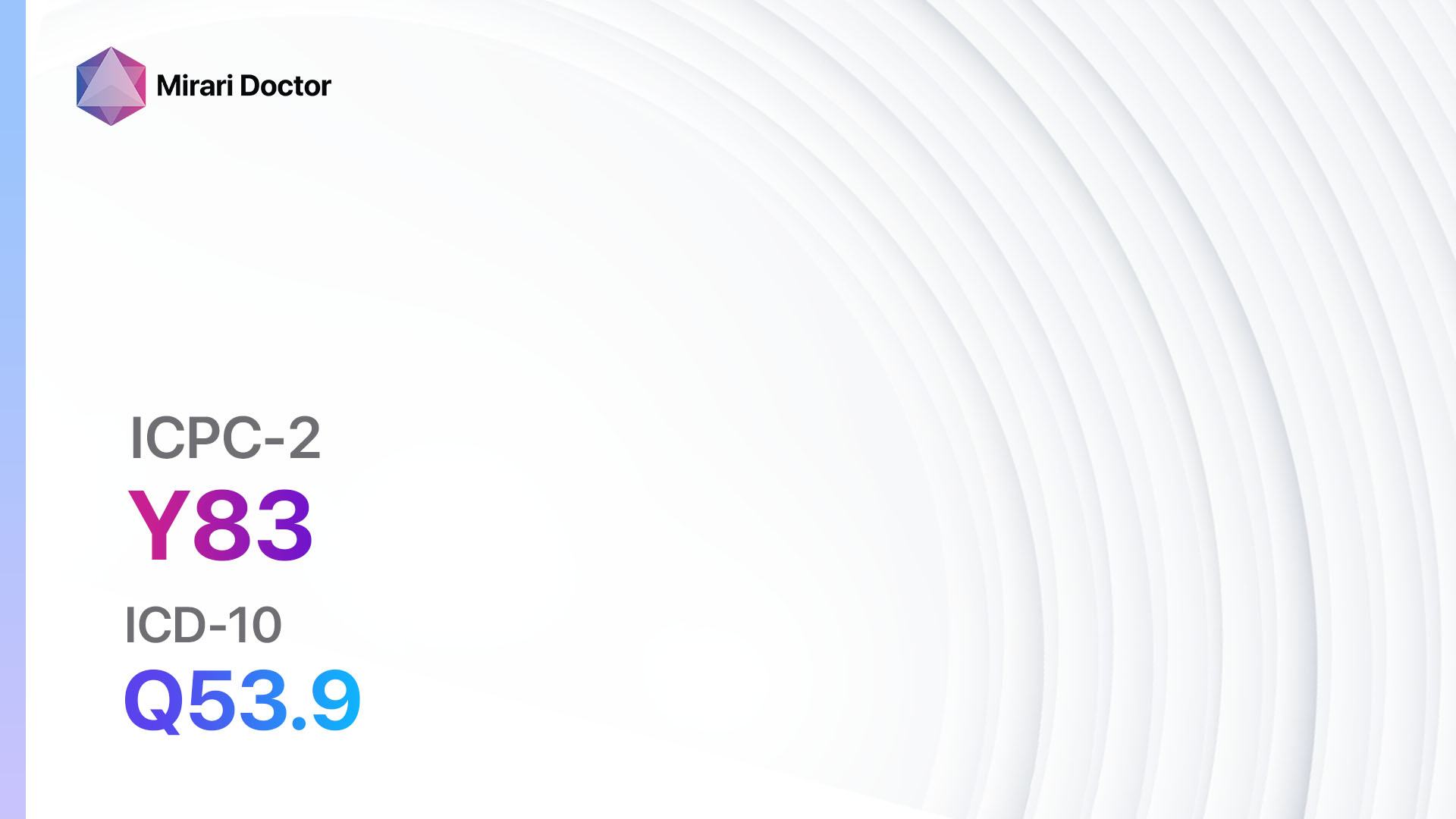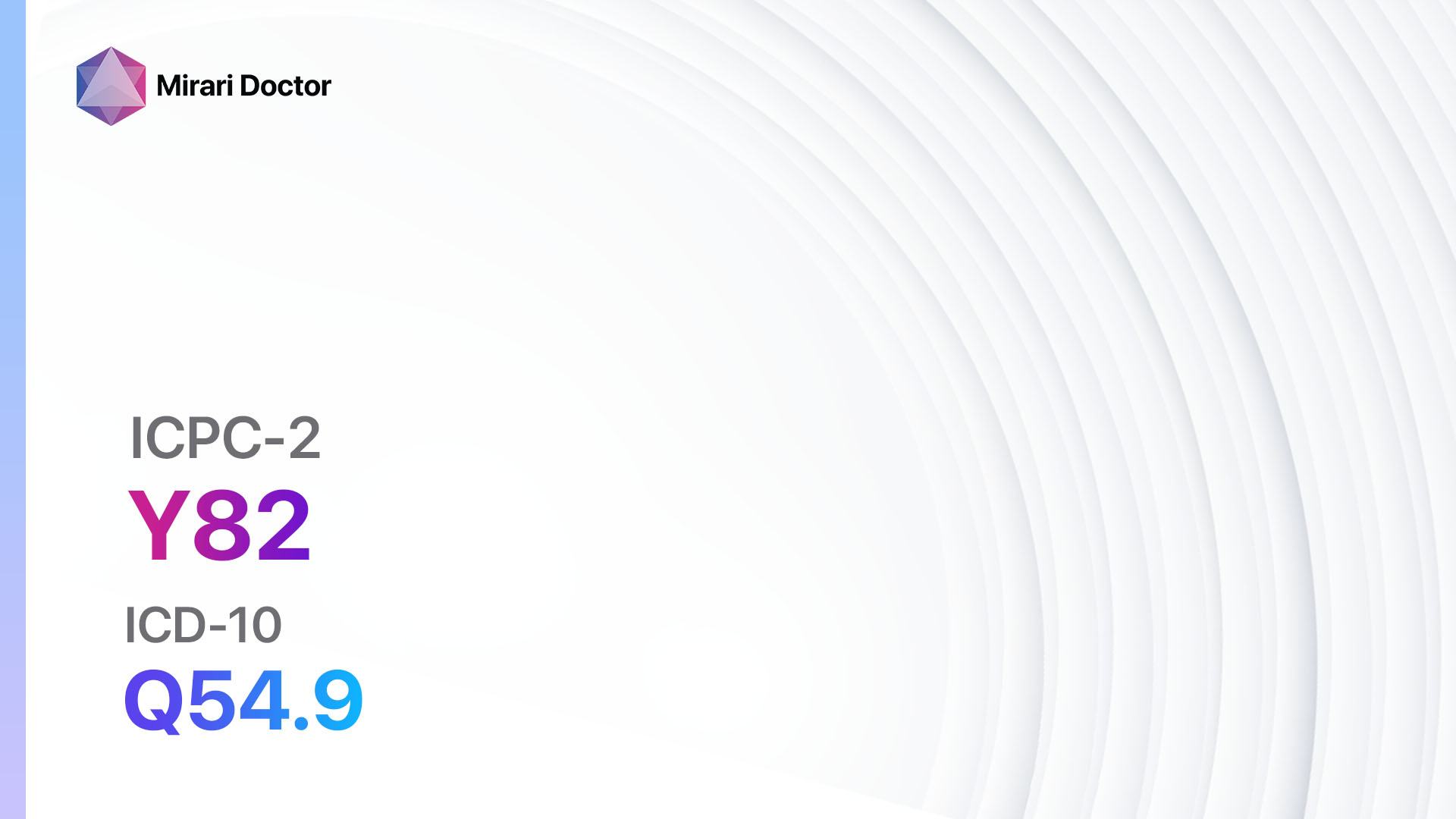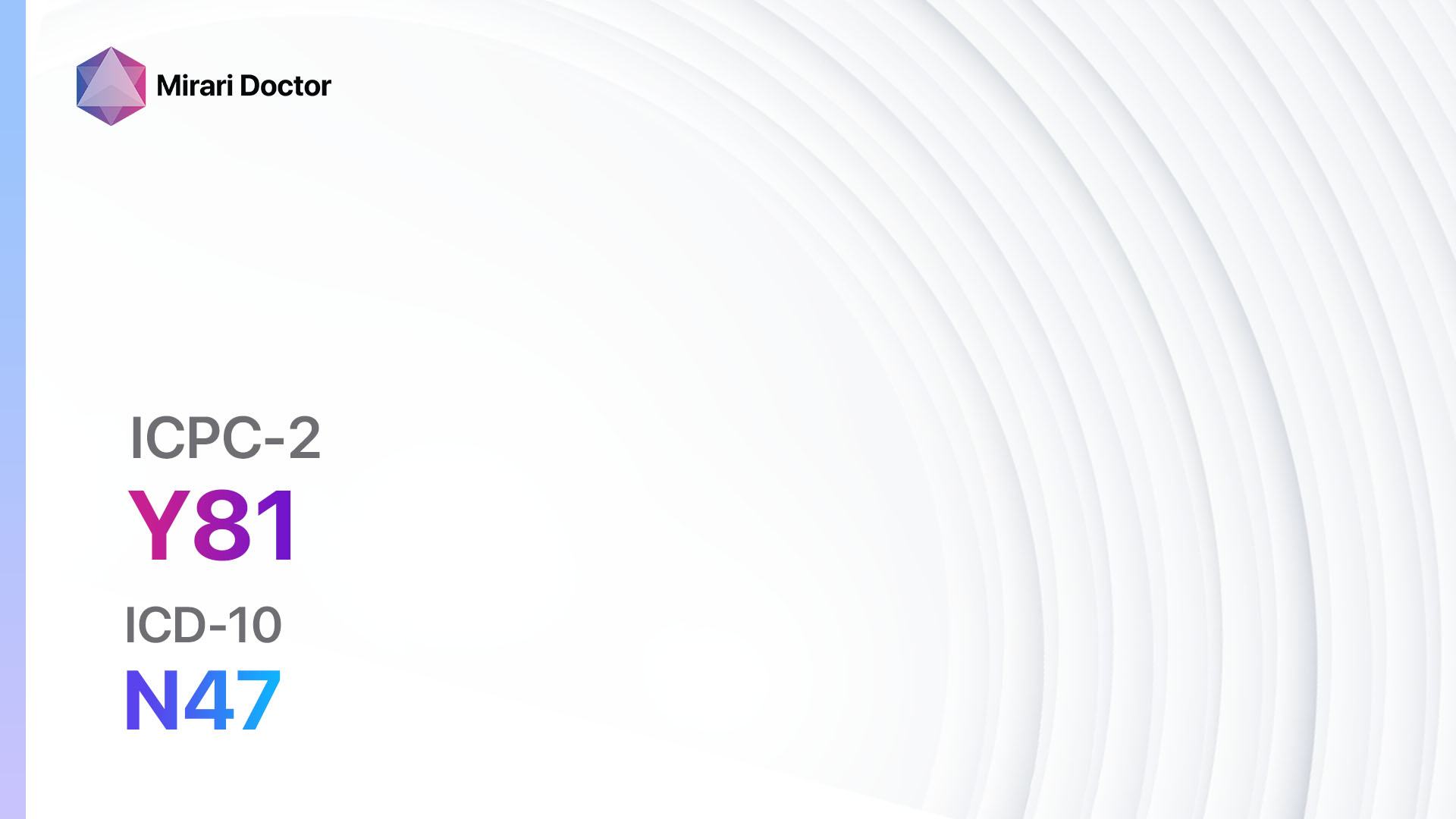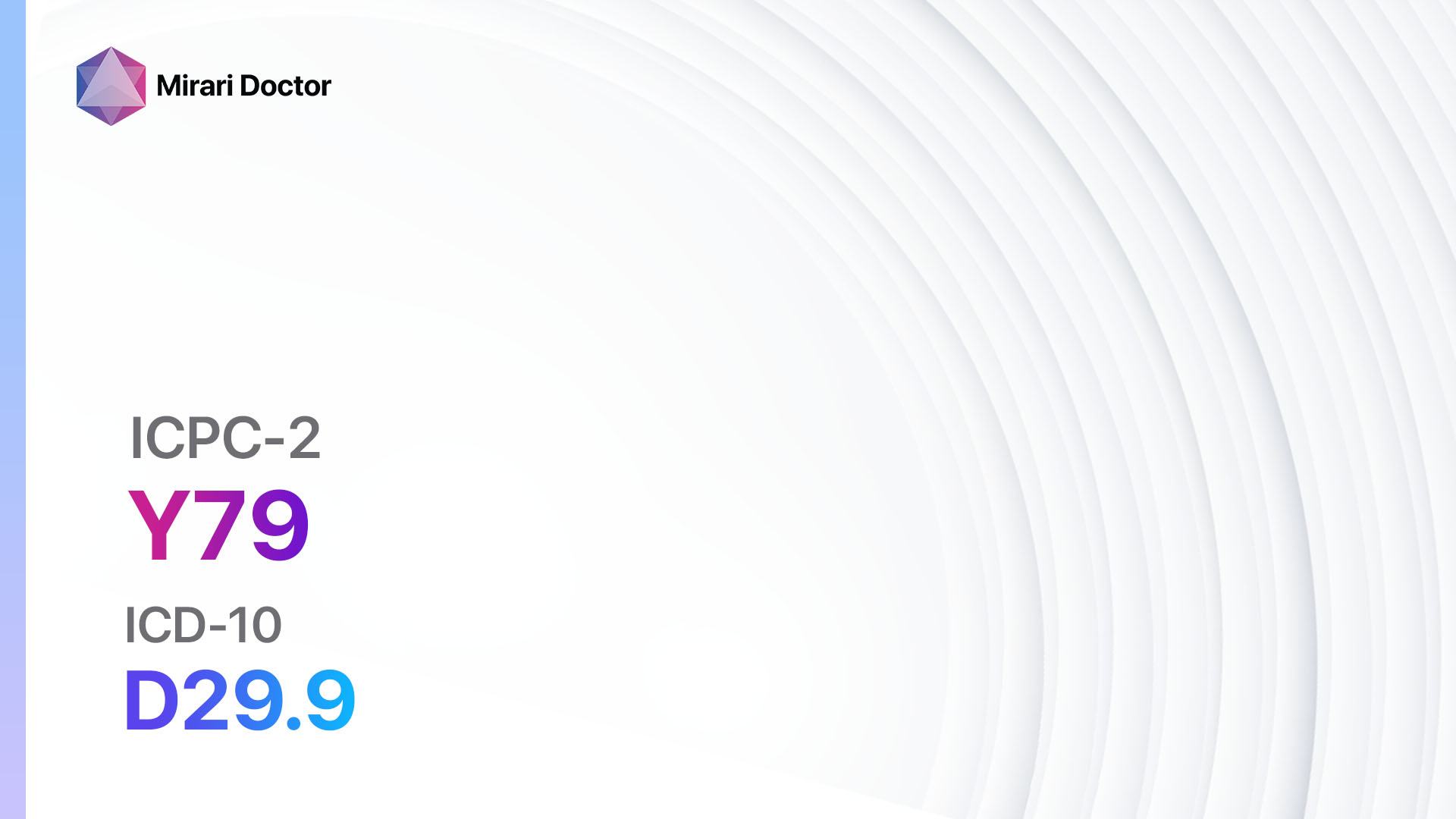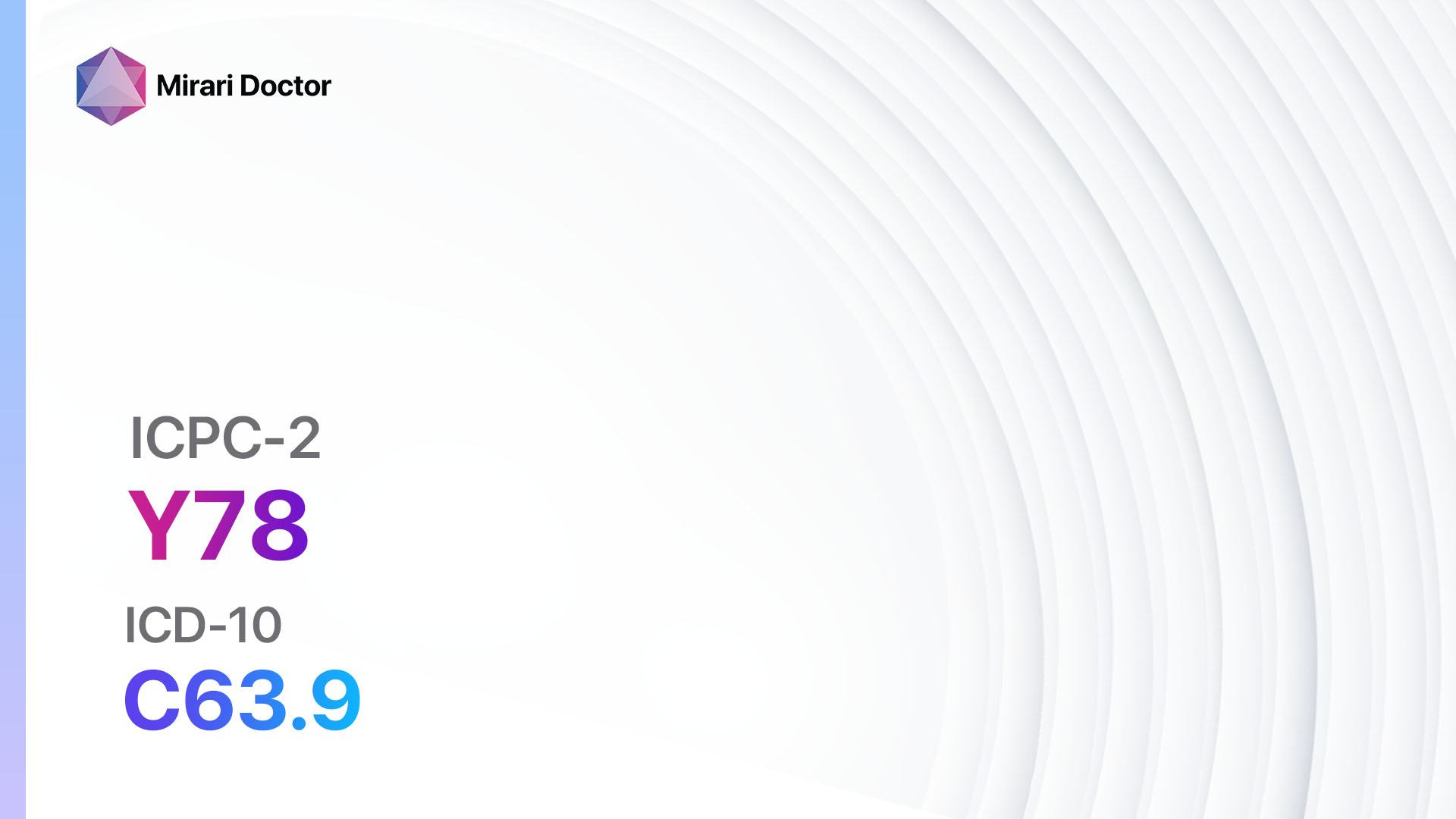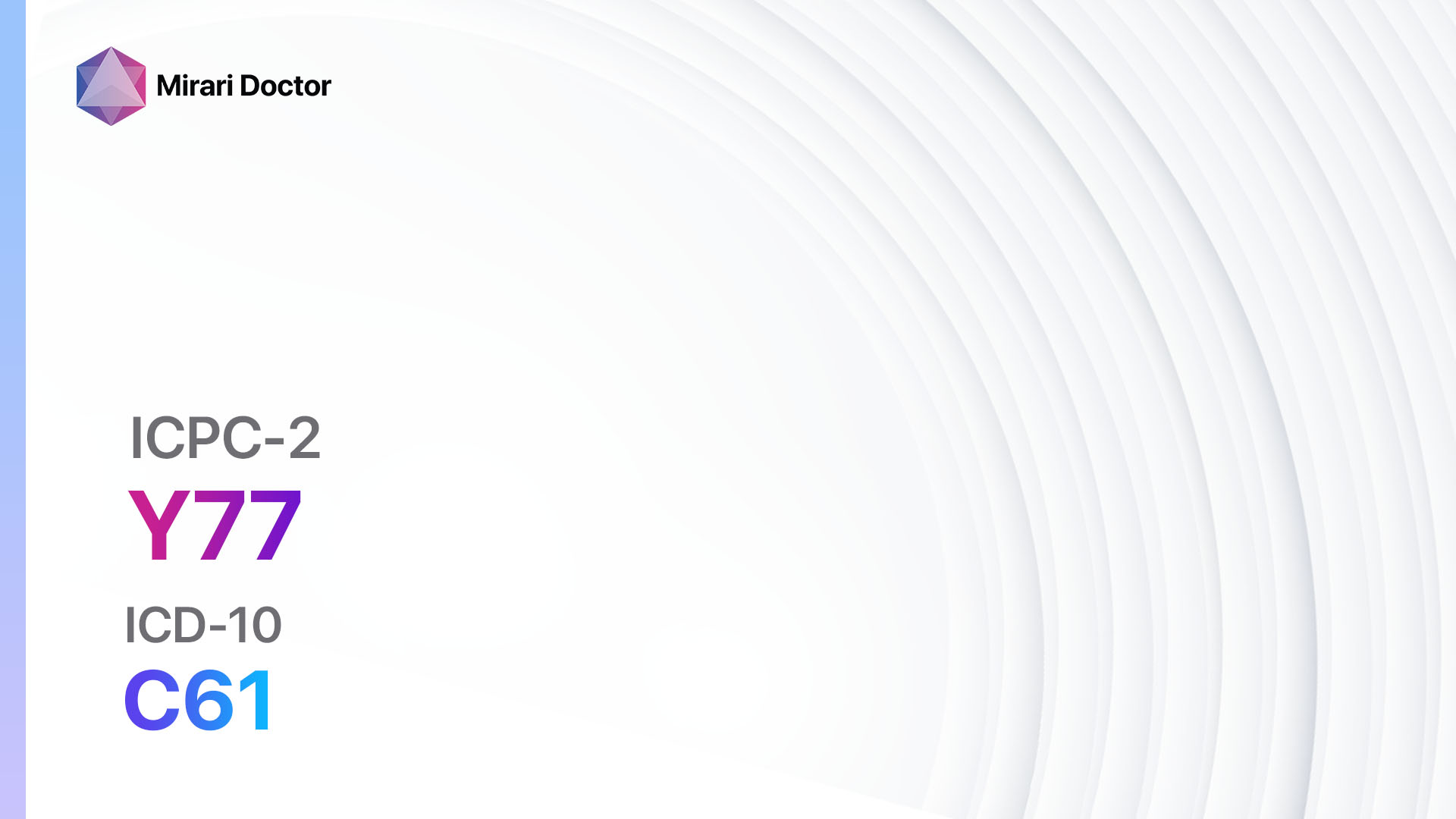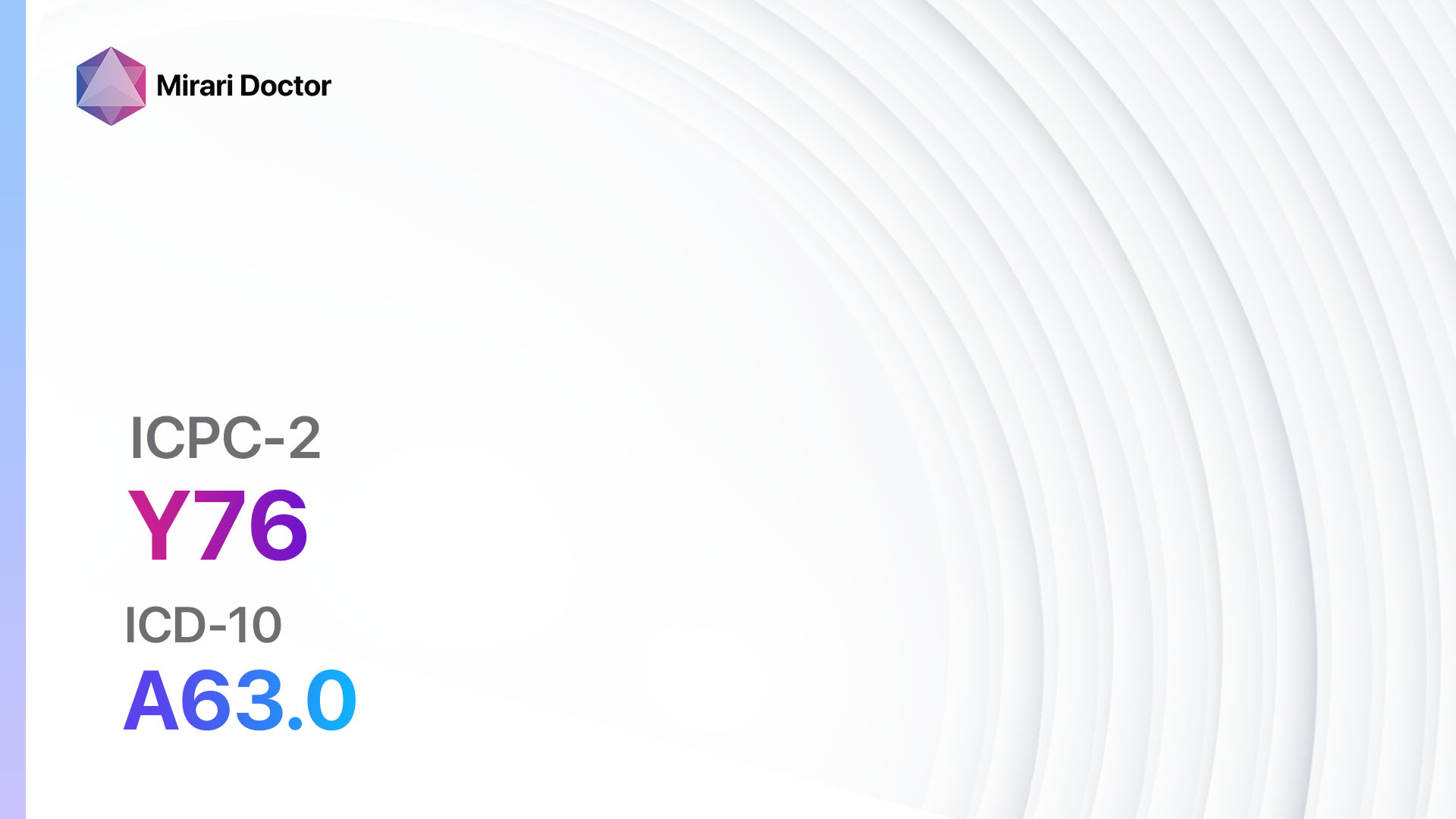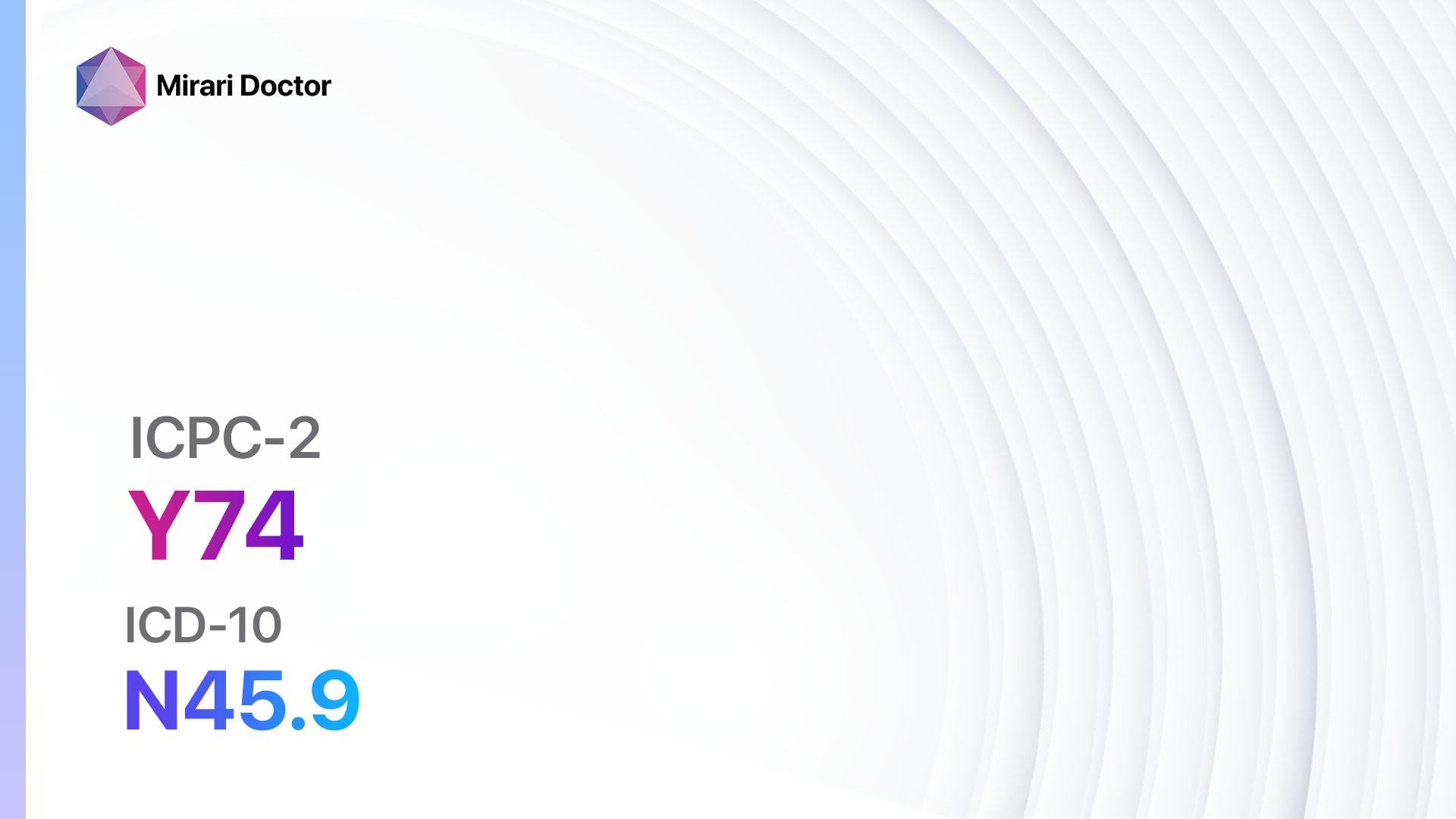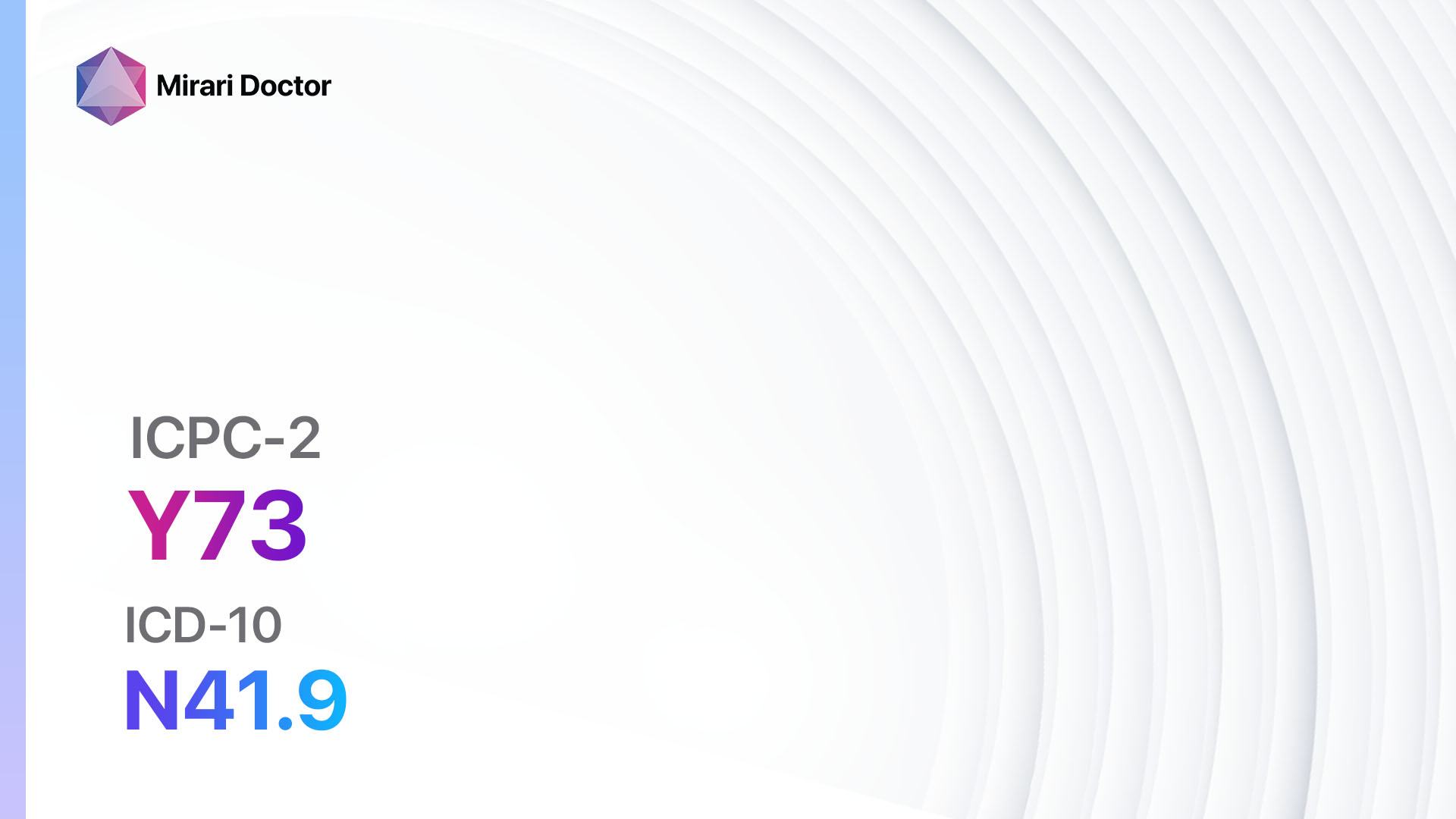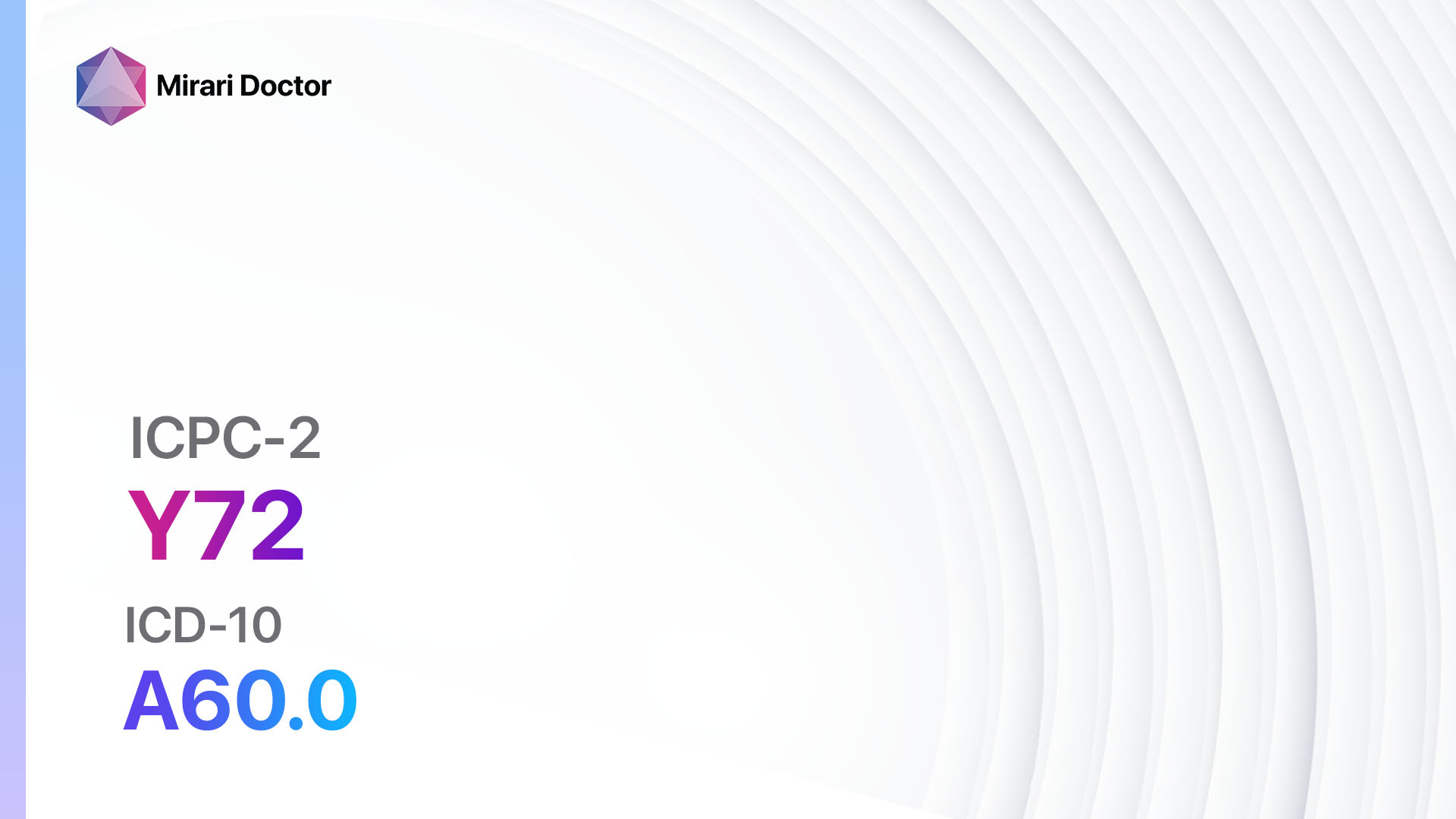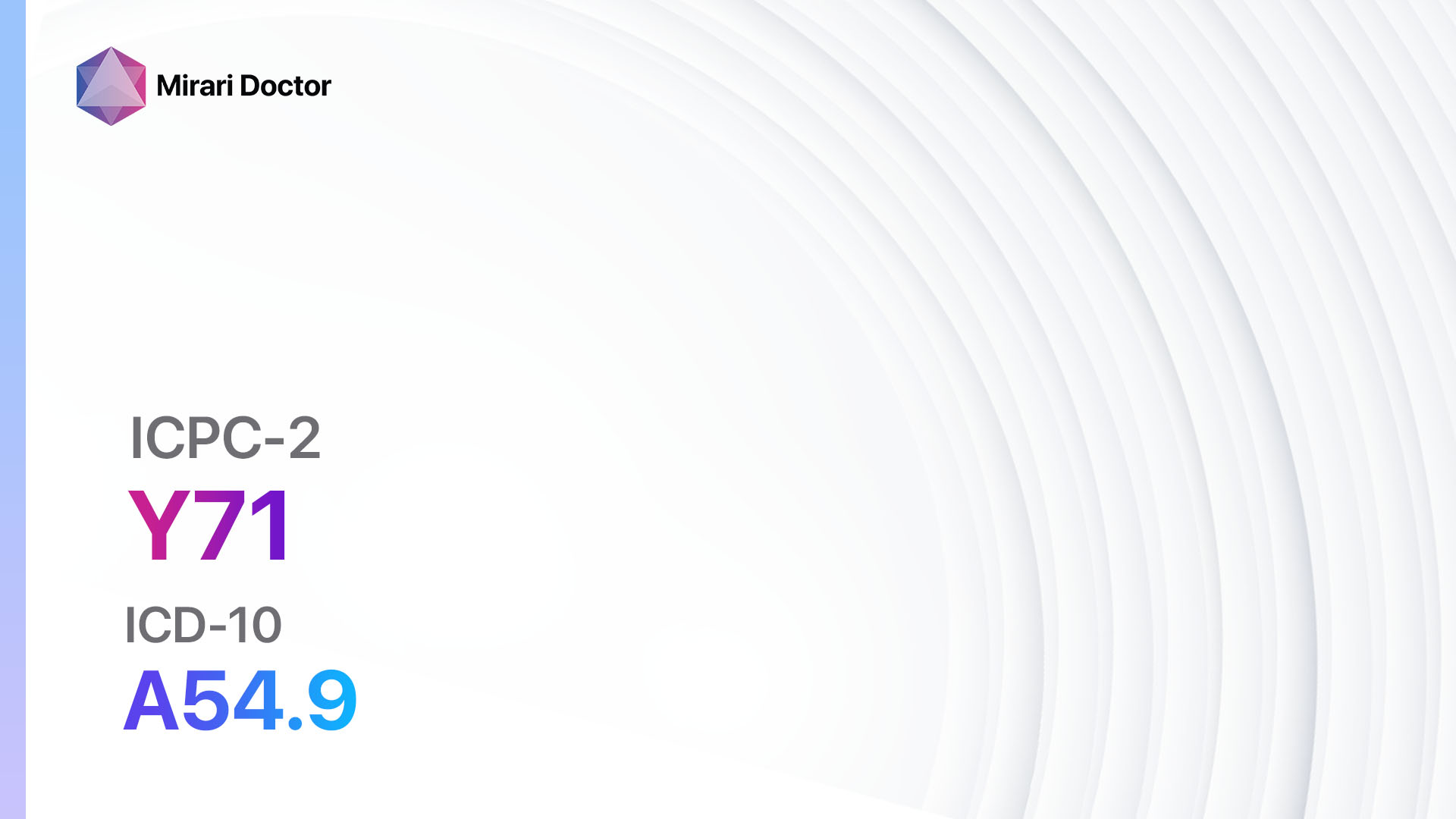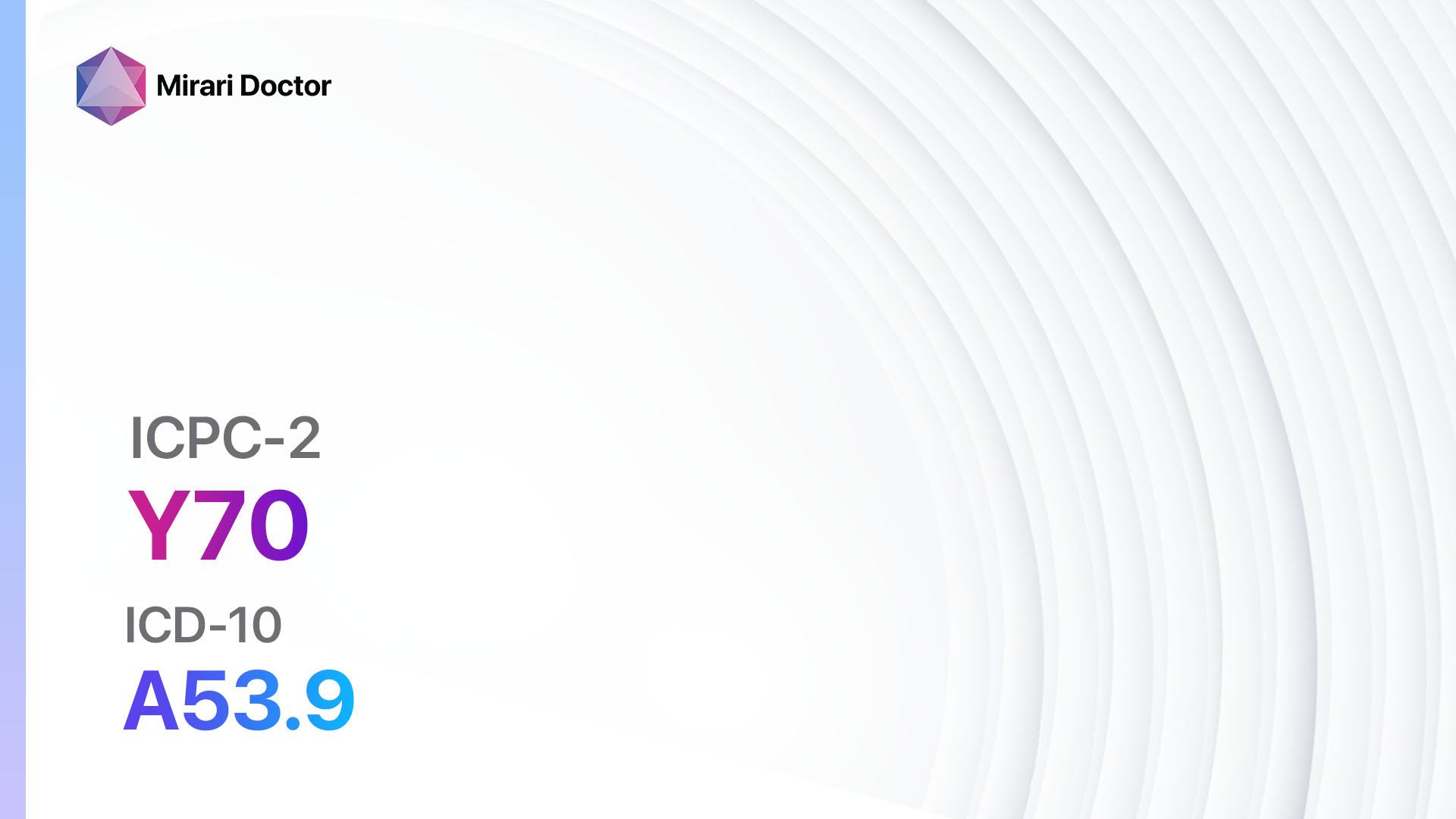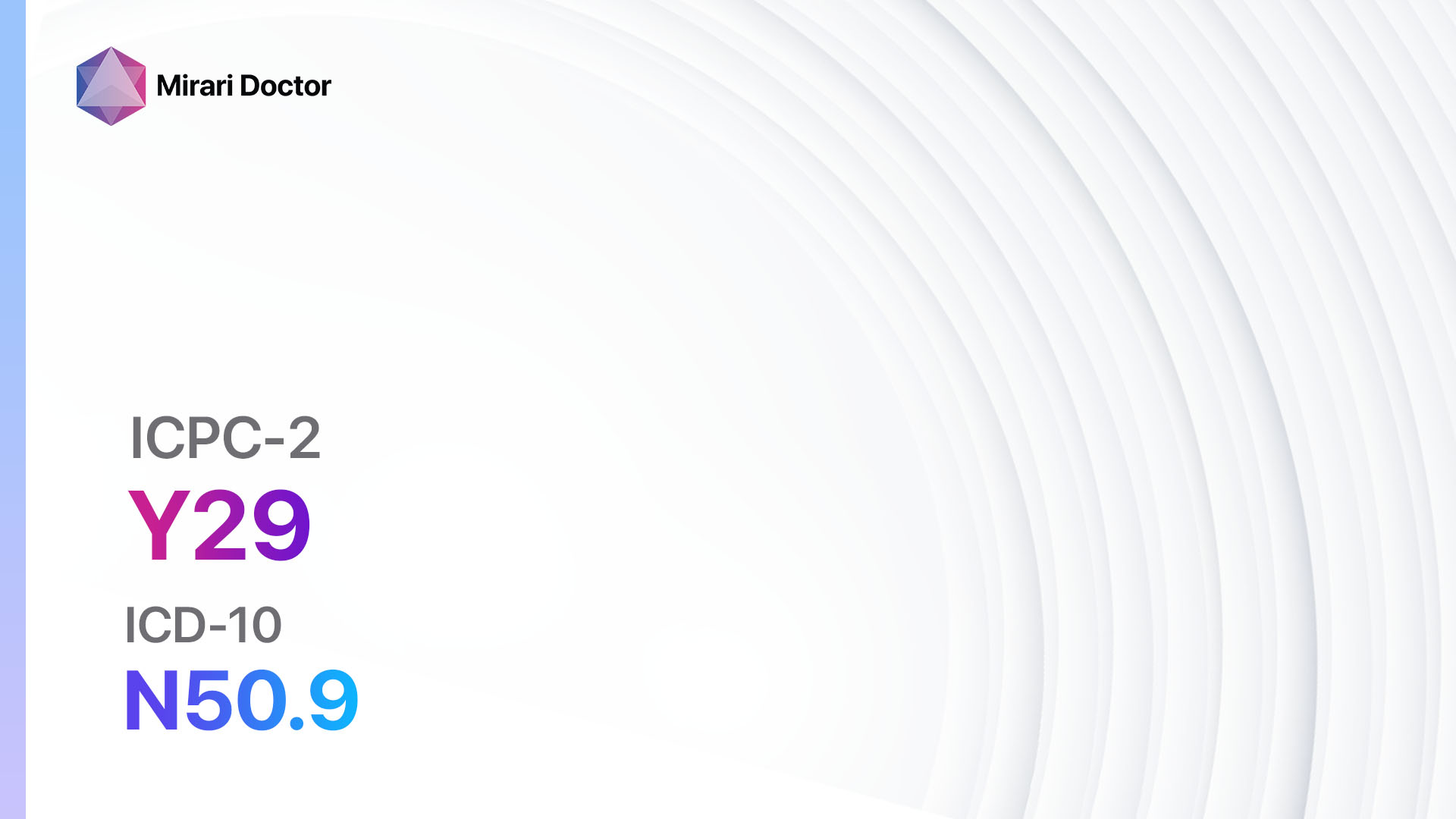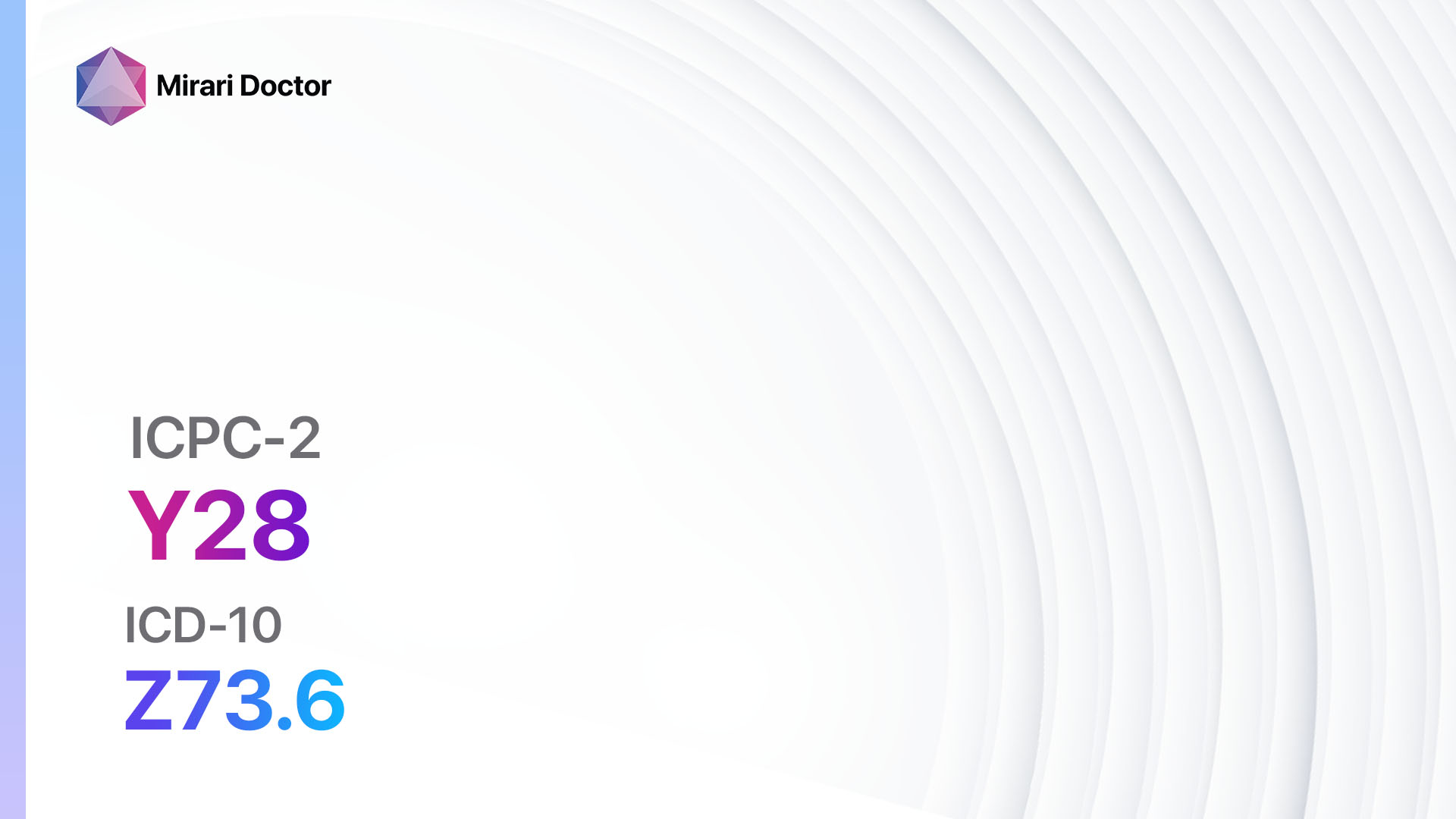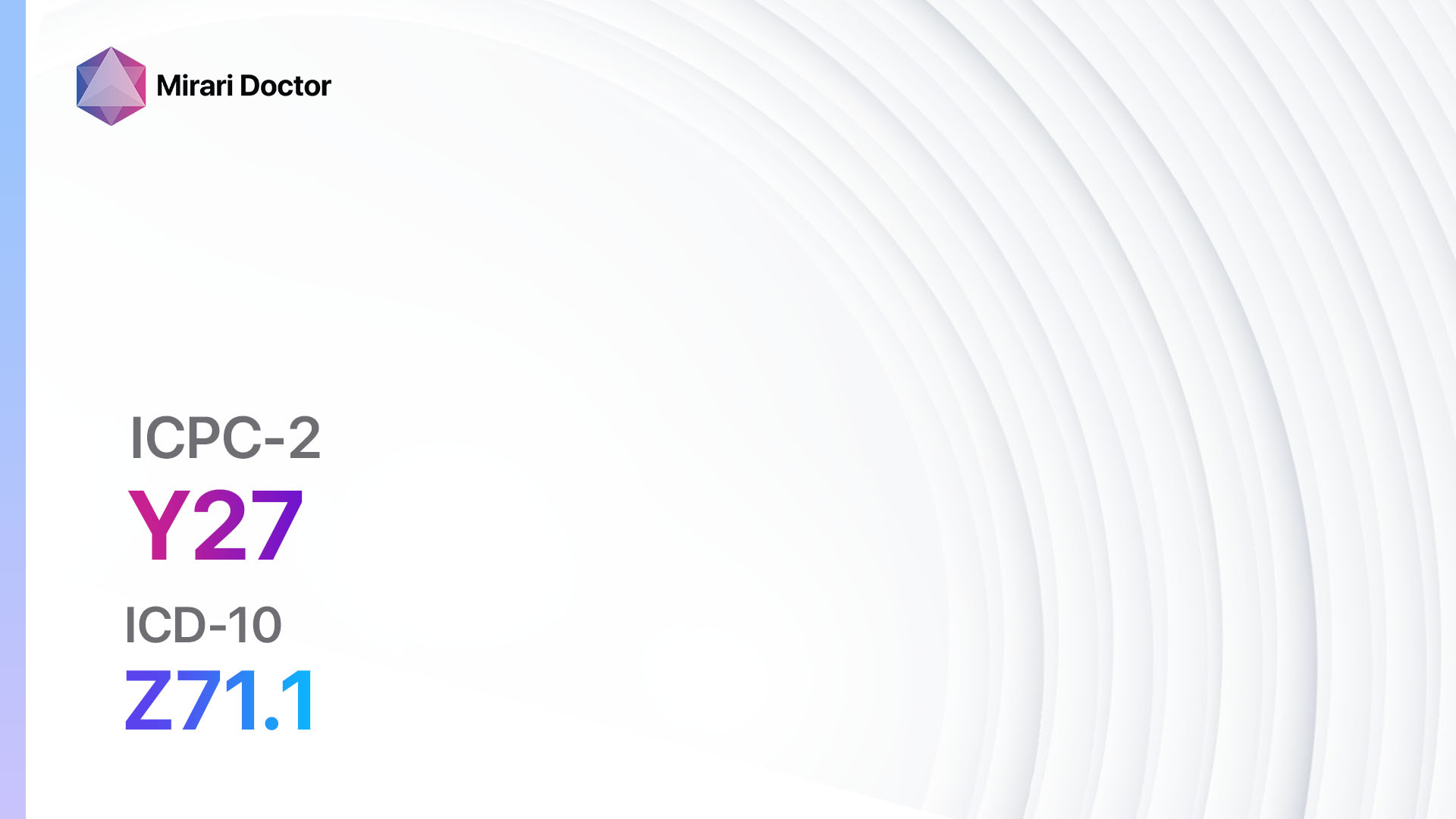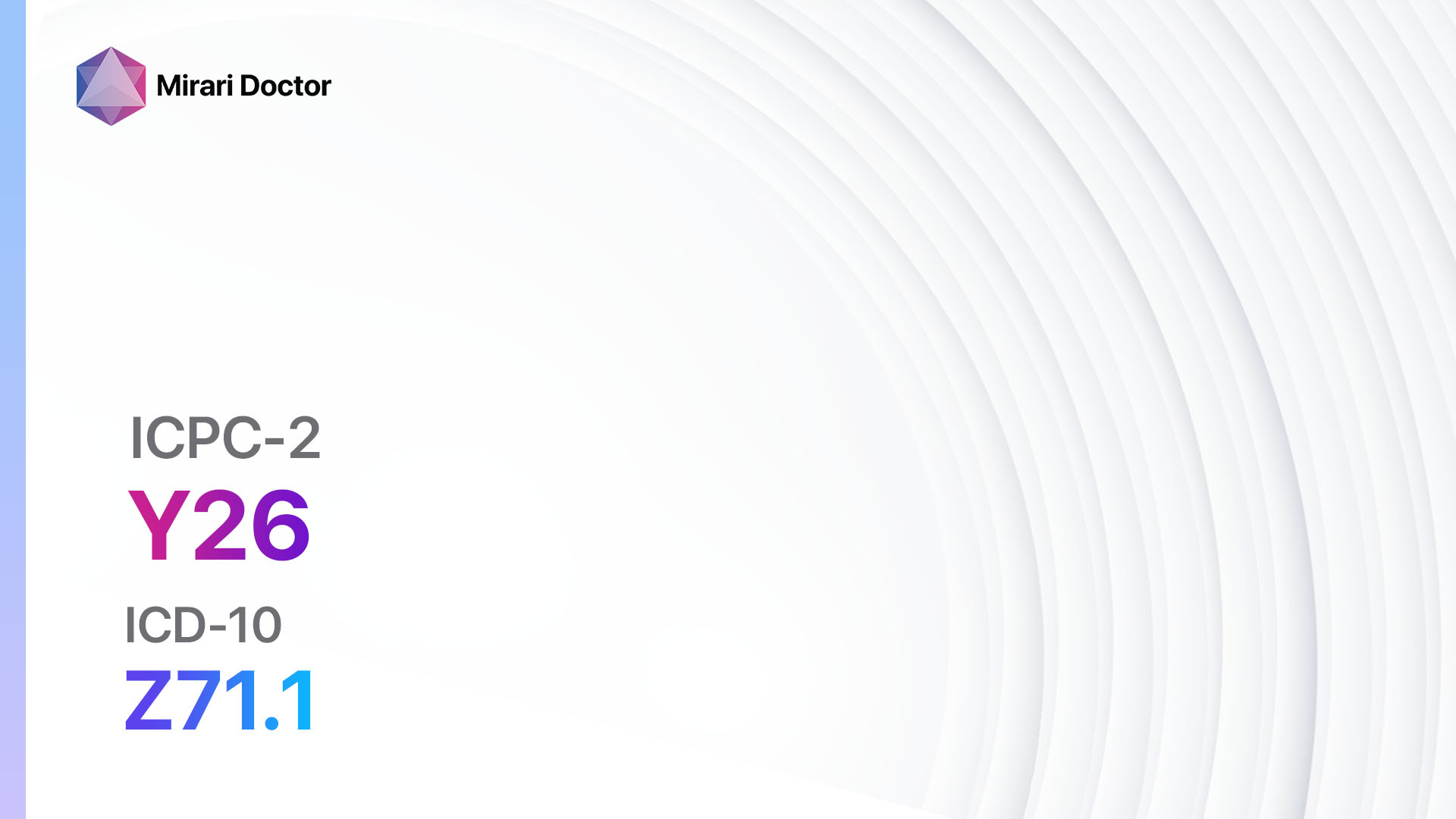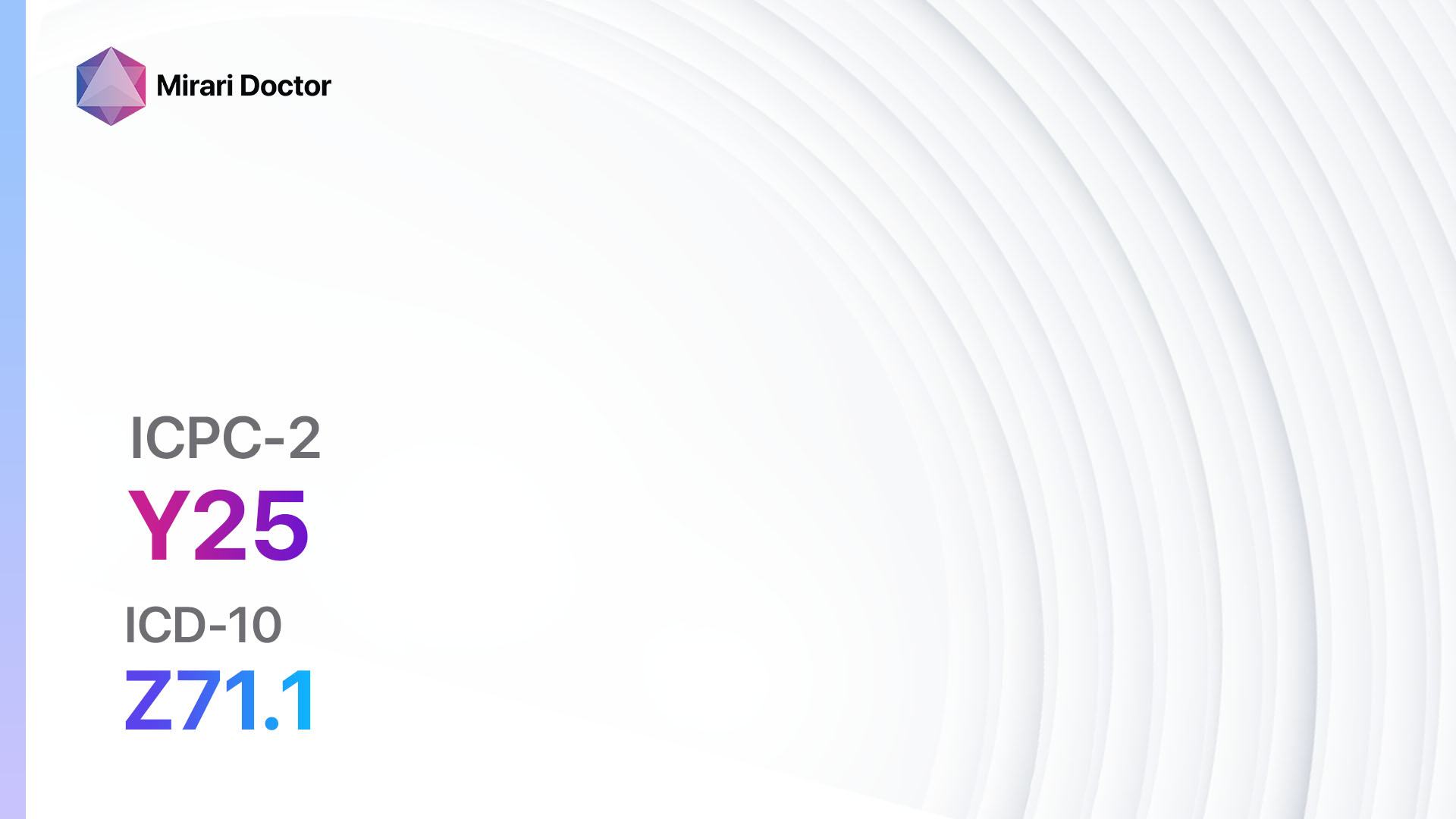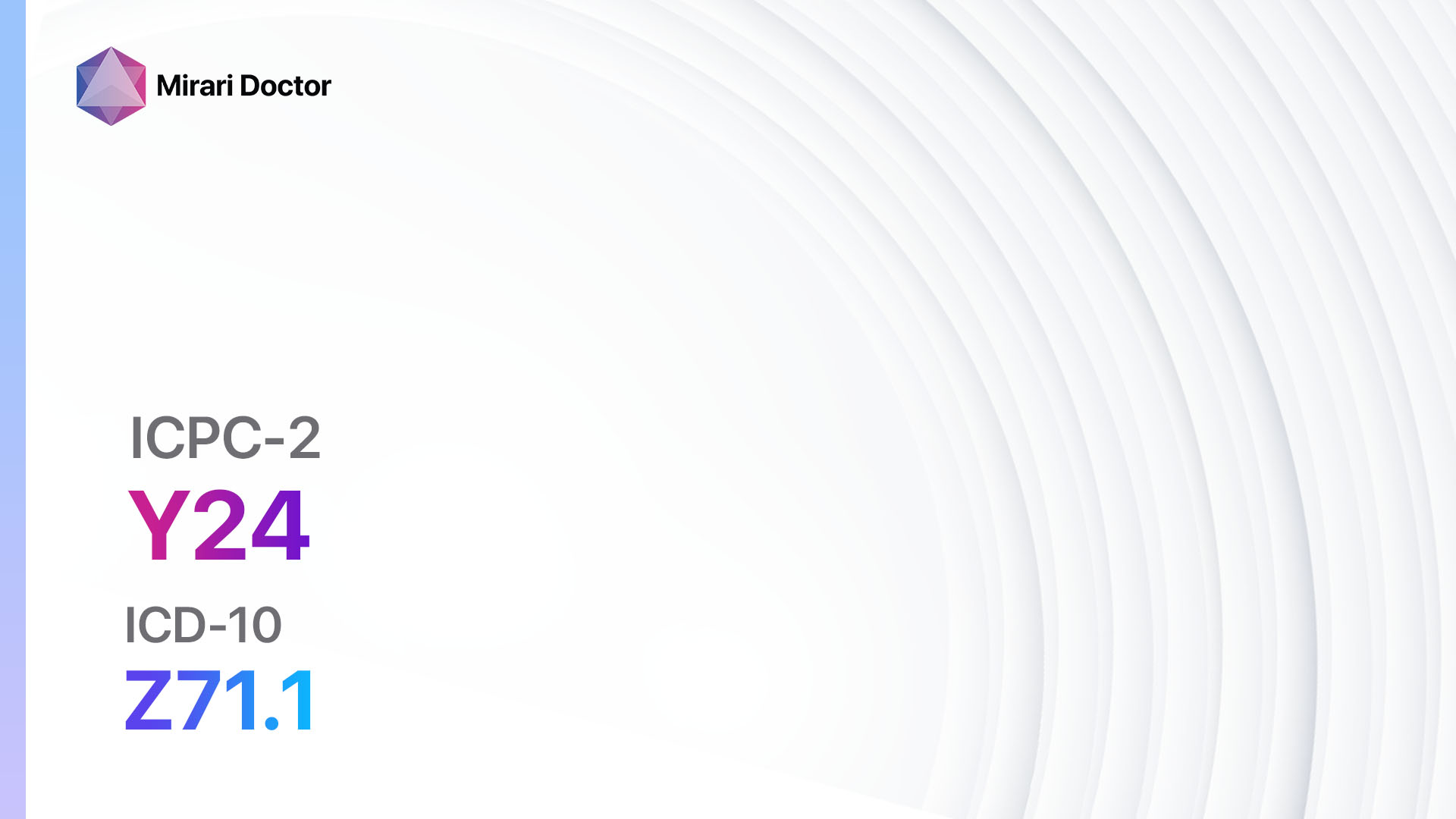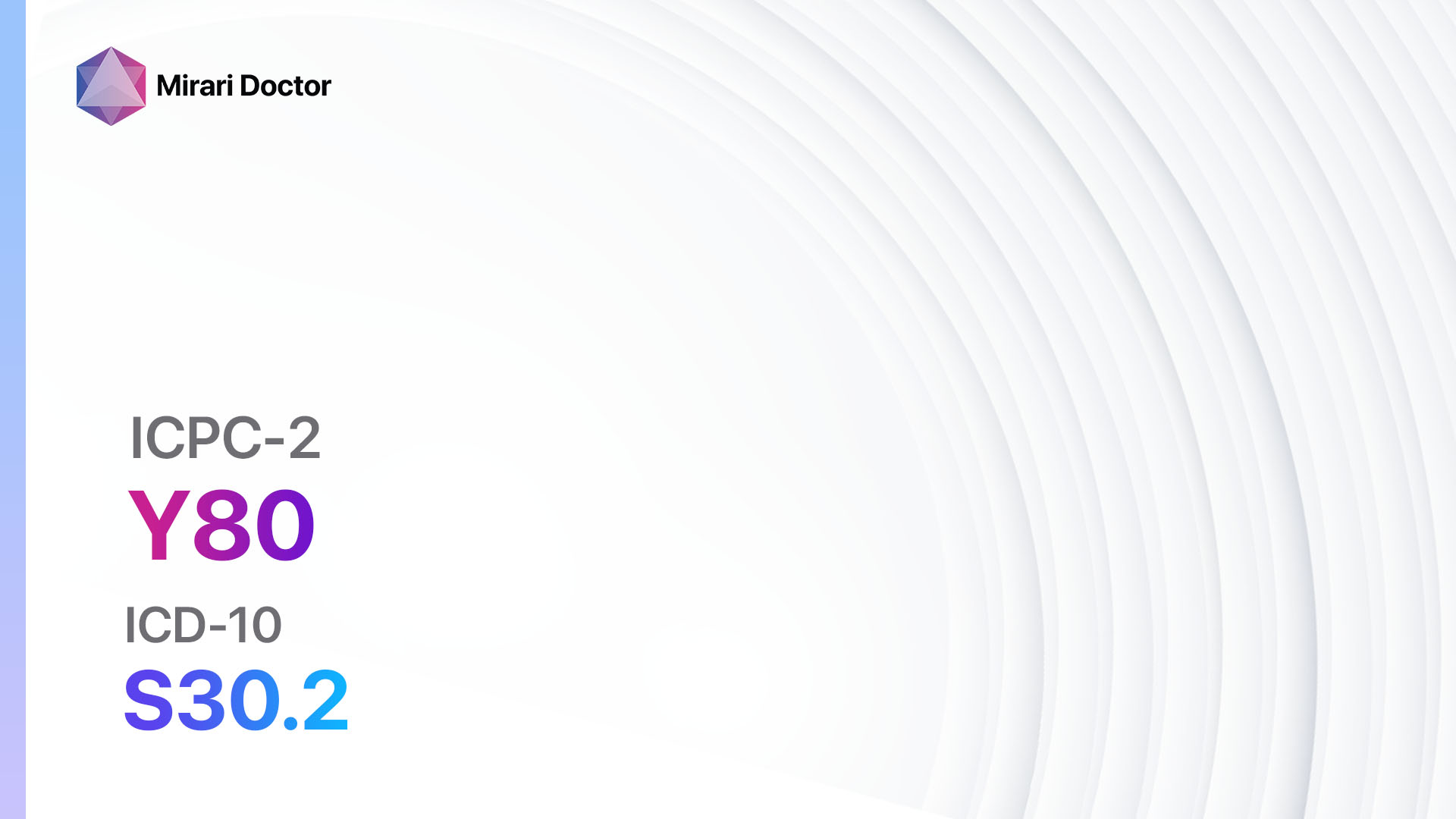
Introduction
Injury to the male genital is a condition that can result from various causes, including trauma, accidents, or sports-related injuries. It can lead to significant pain, discomfort, and potential complications if not properly managed. The aim of this guide is to provide healthcare professionals with a comprehensive approach to diagnosing and managing injuries to the male genital.[1]
Codes
Symptoms
- Pain: Patients may experience localized pain in the genital area, which can range from mild to severe.
- Swelling: Swelling of the genital area may occur as a result of the injury.
- Bruising: Discoloration or bruising of the skin in the genital region may be present.
- Bleeding: In cases of severe injury, bleeding may be observed.[4]
Causes
- Trauma: Injuries to the male genital can result from trauma, such as direct blows or accidents.
- Sports-related injuries: Participation in sports activities can increase the risk of injury to the male genital.[5]
Diagnostic Steps
Medical History
- Gather information about the circumstances surrounding the injury, including the mechanism of injury and any associated symptoms.
- Ask about any medical conditions that may increase the risk of complications or affect the management of the injury.
- Inquire about the presence of any other symptoms or injuries that may be related to the genital injury.[6]
Physical Examination
- Perform a thorough physical examination of the genital area, including inspection and palpation.
- Assess for any signs of swelling, bruising, or bleeding.
- Check for any deformities or abnormalities in the genital region.[7]
Laboratory Tests
- Urinalysis: Perform a urinalysis to assess for the presence of blood or other signs of injury.
- Blood tests: Consider ordering blood tests, such as a complete blood count (CBC) or coagulation profile, to evaluate for any underlying medical conditions or bleeding disorders.[8]
Diagnostic Imaging
- X-ray: Consider obtaining an X-ray if there is suspicion of fractures or other bony injuries.
- Ultrasound: Use ultrasound imaging to assess for any soft tissue injuries or hematomas.
- CT scan: Consider a CT scan if there is a suspicion of more extensive injuries or to evaluate for any associated internal injuries.[9]
Other Tests
- Urethrography: In cases of suspected urethral injury, consider performing urethrography to assess for any urethral strictures or disruptions.
- Magnetic resonance imaging (MRI): Use MRI to evaluate for any soft tissue injuries or to assess for any associated injuries to nearby structures.[10]
Follow-up and Patient Education
- Provide appropriate follow-up care based on the severity and nature of the injury.
- Educate the patient about the importance of rest, proper wound care, and any necessary precautions to prevent further injury.
- Discuss the expected recovery time and any potential complications that may arise.[1]
Possible Interventions
Traditional Interventions
Medications:
Top 5 drugs for Injury male genital:
- Acetaminophen (e.g., Tylenol):
- Cost: $5-$10 for a bottle of 100 tablets.
- Contraindications: Allergy to acetaminophen.
- Side effects: Rare, but can include rash or liver toxicity.
- Severe side effects: Severe liver damage, if taken in excessive doses.
- Drug interactions: Alcohol, certain antibiotics.
- Warning: Do not exceed the recommended dosage.
- Nonsteroidal anti-inflammatory drugs (NSAIDs) (e.g., Ibuprofen, Naproxen):
- Cost: $5-$15 for a bottle of 100 tablets.
- Contraindications: Active peptic ulcer disease, bleeding disorders.
- Side effects: Upset stomach, heartburn.
- Severe side effects: Gastrointestinal bleeding, kidney problems.
- Drug interactions: Blood thinners, certain high blood pressure medications.
- Warning: Take with food to minimize stomach upset.
- Antibiotics (e.g., Cephalexin, Trimethoprim-sulfamethoxazole):
- Cost: $10-$50 for a course of treatment.
- Contraindications: Allergy to the specific antibiotic.
- Side effects: Upset stomach, diarrhea.
- Severe side effects: Severe allergic reactions, Clostridium difficile infection.
- Drug interactions: Certain blood thinners, oral contraceptives.
- Warning: Complete the full course of antibiotics as prescribed.
- Topical analgesics (e.g., Lidocaine gel):
- Cost: $10-$20 for a tube.
- Contraindications: Allergy to lidocaine or local anesthetics.
- Side effects: Local skin reactions, numbness.
- Severe side effects: Allergic reactions, systemic toxicity (rare).
- Drug interactions: None significant.
- Warning: Use as directed and avoid excessive application.
- Antidepressants (e.g., Amitriptyline, Duloxetine):
- Cost: $10-$50 for a month’s supply.
- Contraindications: Allergy to the specific antidepressant.
- Side effects: Drowsiness, dry mouth.
- Severe side effects: Serotonin syndrome, suicidal thoughts (rare).
- Drug interactions: MAO inhibitors, certain pain medications.
- Warning: May take several weeks to achieve full effect.
Alternative Drugs:
- Muscle relaxants (e.g., Cyclobenzaprine): Can help relieve muscle spasms and promote relaxation.
- Antianxiety medications (e.g., Lorazepam): May be used to alleviate anxiety or tension associated with the injury.
- Topical antibiotics (e.g., Neomycin): Can be used to prevent or treat infections in the genital area.
- Antifungal creams (e.g., Clotrimazole): Useful if a fungal infection is present or suspected.
- Antiviral medications (e.g., Acyclovir): May be necessary in cases of viral infections, such as herpes.
Surgical Procedures:
- Surgical repair: In cases of severe genital injuries, surgical repair may be necessary to repair any damaged structures or blood vessels.
- Hematoma drainage: If a large hematoma is present, drainage may be necessary to relieve pain and prevent complications.
Alternative Interventions
- Cold compress: Applying a cold compress to the injured area can help reduce swelling and pain. Cost: $5-$10 for an ice pack.
- Herbal remedies: Some herbal remedies, such as aloe vera gel or calendula cream, may help soothe the injured area and promote healing. Cost: Varies depending on the specific product.
- Physical therapy: In cases of severe injuries, physical therapy may be beneficial to promote healing and restore normal function. Cost: $50-$100 per session.
- Acupuncture: Acupuncture may help reduce pain and promote healing. Cost: $60-$120 per session.
- Meditation or relaxation techniques: These techniques can help manage pain and promote overall well-being. Cost: Varies depending on the specific program or class.
Lifestyle Interventions
- Rest and elevation: Resting and elevating the injured area can help reduce swelling and promote healing. Cost: None.
- Proper nutrition: Ensuring a balanced diet with adequate nutrients can promote healing and overall health. Cost: Varies depending on food choices.
- Avoiding strenuous activities: Restricting strenuous activities can prevent further injury and promote healing. Cost: None.
- Stress management: Managing stress can help improve overall well-being and aid in the healing process. Cost: Varies depending on the specific technique or program.
- Physical activity modification: Modifying physical activities to avoid potential injury can help prevent further complications. Cost: None.
It is important to note that the cost ranges provided are approximate and may vary depending on the location and availability of the interventions. It is recommended to consult with a healthcare professional for a more accurate cost assessment and to determine the most appropriate interventions for each individual case.
Mirari Cold Plasma Alternative Intervention
Understanding Mirari Cold Plasma
- Safe and Non-Invasive Treatment: Mirari Cold Plasma is a safe and non-invasive treatment option for various skin conditions. It does not require incisions, minimizing the risk of scarring, bleeding, or tissue damage.
- Efficient Extraction of Foreign Bodies: Mirari Cold Plasma facilitates the removal of foreign bodies from the skin by degrading and dissociating organic matter, allowing easier access and extraction.
- Pain Reduction and Comfort: Mirari Cold Plasma has a local analgesic effect, providing pain relief during the treatment, making it more comfortable for the patient.
- Reduced Risk of Infection: Mirari Cold Plasma has antimicrobial properties, effectively killing bacteria and reducing the risk of infection.
- Accelerated Healing and Minimal Scarring: Mirari Cold Plasma stimulates wound healing and tissue regeneration, reducing healing time and minimizing the formation of scars.
Mirari Cold Plasma Prescription
Video instructions for using Mirari Cold Plasma Device – Y80 Injury male genital (ICD-10:S30.2)
| Mild | Moderate | Severe |
| Mode setting: 1 (Infection) Location: 0 (Localized) Morning: 15 minutes, Evening: 15 minutes |
Mode setting: 1 (Infection) Location: 0 (Localized) Morning: 30 minutes, Lunch: 30 minutes, Evening: 30 minutes |
Mode setting: 1 (Infection) Location: 0 (Localized) Morning: 30 minutes, Lunch: 30 minutes, Evening: 30 minutes |
| Mode setting: 2 (Wound Healing) Location: 0 (Localized) Morning: 15 minutes, Evening: 15 minutes |
Mode setting: 2 (Wound Healing) Location: 0 (Localized) Morning: 30 minutes, Lunch: 30 minutes, Evening: 30 minutes |
Mode setting: 2 (Wound Healing) Location: 0 (Localized) Morning: 30 minutes, Lunch: 30 minutes, Evening: 30 minutes |
| Mode setting: 5 (Prostatitis Therapy) Location: 0 (Localized) Morning: 15 minutes, Evening: 15 minutes |
Mode setting: 5 (Prostatitis Therapy) Location: 0 (Localized) Morning: 30 minutes, Lunch: 30 minutes, Evening: 30 minutes |
Mode setting: 5 (Prostatitis Therapy) Location: 0 (Localized) Morning: 30 minutes, Lunch: 30 minutes, Evening: 30 minutes |
| Mode setting: 7 (Immunotherapy) Location: 1 (Sacrum) Morning: 15 minutes, Evening: 15 minutes |
Mode setting: 7 (Immunotherapy) Location: 1 (Sacrum) Morning: 30 minutes, Lunch: 30 minutes, Evening: 30 minutes |
Mode setting: 7 (Immunotherapy) Location: 1 (Sacrum) Morning: 30 minutes, Lunch: 30 minutes, Evening: 30 minutes |
| Total Morning: 60 minutes approx. $10 USD, Evening: 60 minutes approx. $10 USD |
Total Morning: 120 minutes approx. $20 USD, Lunch: 120 minutes approx. $20 USD, Evening: 120 minutes approx. $20 USD, |
Total Morning: 120 minutes approx. $20 USD, Lunch: 120 minutes approx. $20 USD, Evening: 120 minutes approx. $20 USD, |
| Usual treatment for 7-60 days approx. $140 USD – $1200 USD | Usual treatment for 6-8 weeks approx. $2,520 USD – $3,360 USD |
Usual treatment for 3-6 months approx. $5,400 USD – $10,800 USD
|
 |
|
Use the Mirari Cold Plasma device to treat Injury male genital effectively.
WARNING: MIRARI COLD PLASMA IS DESIGNED FOR THE HUMAN BODY WITHOUT ANY ARTIFICIAL OR THIRD PARTY PRODUCTS. USE OF OTHER PRODUCTS IN COMBINATION WITH MIRARI COLD PLASMA MAY CAUSE UNPREDICTABLE EFFECTS, HARM OR INJURY. PLEASE CONSULT A MEDICAL PROFESSIONAL BEFORE COMBINING ANY OTHER PRODUCTS WITH USE OF MIRARI.
Step 1: Cleanse the Skin
- Start by cleaning the affected area of the skin with a gentle cleanser or mild soap and water. Gently pat the area dry with a clean towel.
Step 2: Prepare the Mirari Cold Plasma device
- Ensure that the Mirari Cold Plasma device is fully charged or has fresh batteries as per the manufacturer’s instructions. Make sure the device is clean and in good working condition.
- Switch on the Mirari device using the power button or by following the specific instructions provided with the device.
- Some Mirari devices may have adjustable settings for intensity or treatment duration. Follow the manufacturer’s instructions to select the appropriate settings based on your needs and the recommended guidelines.
Step 3: Apply the Device
- Place the Mirari device in direct contact with the affected area of the skin. Gently glide or hold the device over the skin surface, ensuring even coverage of the area experiencing.
- Slowly move the Mirari device in a circular motion or follow a specific pattern as indicated in the user manual. This helps ensure thorough treatment coverage.
Step 4: Monitor and Assess:
- Keep track of your progress and evaluate the effectiveness of the Mirari device in managing your Injury male genital. If you have any concerns or notice any adverse reactions, consult with your health care professional.
Note
This guide is for informational purposes only and should not replace the advice of a medical professional. Always consult with your healthcare provider or a qualified medical professional for personal advice, diagnosis, or treatment. Do not solely rely on the information presented here for decisions about your health. Use of this information is at your own risk. The authors of this guide, nor any associated entities or platforms, are not responsible for any potential adverse effects or outcomes based on the content.
Mirari Cold Plasma System Disclaimer
- Purpose: The Mirari Cold Plasma System is a Class 2 medical device designed for use by trained healthcare professionals. It is registered for use in Thailand and Vietnam. It is not intended for use outside of these locations.
- Informational Use: The content and information provided with the device are for educational and informational purposes only. They are not a substitute for professional medical advice or care.
- Variable Outcomes: While the device is approved for specific uses, individual outcomes can differ. We do not assert or guarantee specific medical outcomes.
- Consultation: Prior to utilizing the device or making decisions based on its content, it is essential to consult with a Certified Mirari Tele-Therapist and your medical healthcare provider regarding specific protocols.
- Liability: By using this device, users are acknowledging and accepting all potential risks. Neither the manufacturer nor the distributor will be held accountable for any adverse reactions, injuries, or damages stemming from its use.
- Geographical Availability: This device has received approval for designated purposes by the Thai and Vietnam FDA. As of now, outside of Thailand and Vietnam, the Mirari Cold Plasma System is not available for purchase or use.
References
- Armenakas NA, McAninch JW. Genital trauma. In: Wein AJ, Kavoussi LR, Partin AW, Peters CA, eds. Campbell-Walsh Urology. 11th ed. Philadelphia, PA: Elsevier; 2016:2379-2392.
- World Health Organization. International Classification of Primary Care, Second edition (ICPC-2). Geneva: WHO; 2003.
- World Health Organization. International Statistical Classification of Diseases and Related Health Problems, 10th Revision (ICD-10). Geneva: WHO; 2019.
- Morey AF, Metro MJ, Carney KJ, Miller KS, McAninch JW. Consensus on genitourinary trauma: external genitalia. BJU Int. 2004;94(4):507-515.
- Tiguert R, Harb JF, Hurley PM, et al. Management of shotgun injuries to the pelvis and lower genitourinary system. Urology. 2000;55(2):193-197.
- Phonsombat S, Master VA, McAninch JW. Penetrating external genital trauma: a 30-year single institution experience. J Urol. 2008;180(1):192-195.
- Morey AF, Brandes S, Dugi DD 3rd, et al. Urotrauma: AUA guideline. J Urol. 2014;192(2):327-335.
- Wessells H, Long L. Penile and genital injuries. Urol Clin North Am. 2006;33(1):117-126.
- Bhatt S, Dogra VS. Role of US in testicular and scrotal trauma. Radiographics. 2008;28(6):1617-1629.
- Avery LL, Scheinfeld MH. Imaging of penile and scrotal emergencies. Radiographics. 2013;33(3):721-740
Related articles
Made in USA


